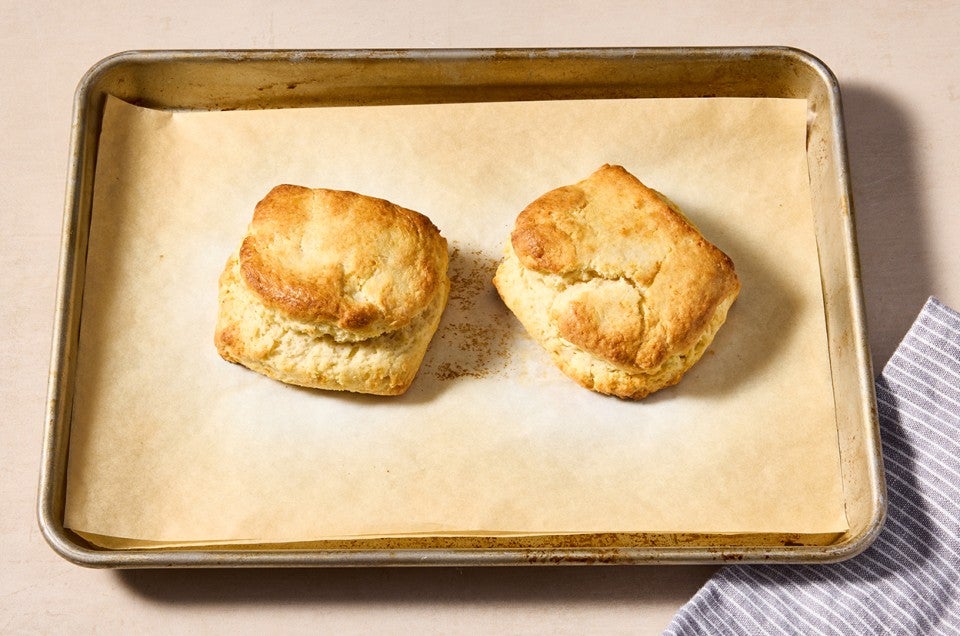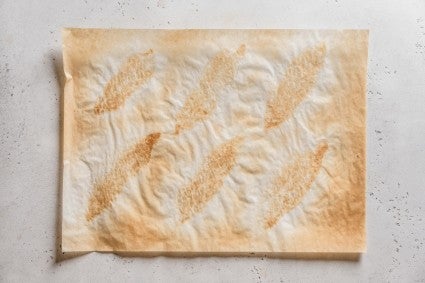Things bakers know: A smarter way to store your parchment
Save it to reuse again and again.


The freezer is a sneakily useful baking tool. The secret to your favorite scone recipe? A rest in the freezer. The best way to ensure your pie crust doesn’t shrink? Chill the rolled-out dough in the freezer. The highest-rising biscuits you’ve ever made? I’m sure you see where I’m going here ... So yes, the freezer is a great place to chill dough, but it’s more versatile than you might think. For instance, did you know it’s also the best place to store your used parchment paper?
King Arthur’s precut parchment paper is a staple in my home kitchen, and because I’m environmentally conscious (and, as my family would call me, cheap), I like to reuse my parchment again and again (and again, and again). Parchment paper is disposable, yes, but also surprisingly durable. Depending on what you’re baking, a single sheet can be used several times before it becomes too brittle or greasy. Not only does reusing parchment reduce waste, but it saves money and helps you get more mileage out of a basic kitchen staple. Still, there’s one small issue: storing the used parchment.
Once exposed to fat (butter, coconut oil, olive oil, etc.), the sheets can start to take on a greasy feel — and if left at room temperature, they might get sticky, crumpled, or even start to smell. Enter the freezer. Stashing your used parchment in the freezer helps to prevent unpleasant odors, eliminates the risk of a crumby mess among your baking supplies, and it keeps your kitchen free from any unwanted visitors of the rodent and/or insect variety.

After baking, allow the parchment to cool completely before wiping off any crumbs or excess grease with a clean baking towel. Fold the used parchment in quarters, then tuck inside a gallon zip-top bag and pop in your freezer, indefinitely, for all your future baking needs. If cross-contamination is a concern for your house, feel free to label what was baked on the parchment sheet so you don’t inadvertently expose anyone to ingredients they might be avoiding, such as gluten or nuts. Labeling “sweet” or “savory” is also a great idea to be sure that you don’t reuse a savory piece of parchment paper to bake your next batch of cookies.
If your parchment was used but not baked — for instance, used to roll out pie dough, shaped into a funnel to refill spices, or served as a surface to catch citrus zest — it can still be wiped down, folded, and stored in the freezer for future use. As long as it's relatively clean and free of strong odors or heavy grease, it's worth saving for another round.
It's not hard to tell when a piece of parchment paper needs to finally be tossed. If the oven was over 450°F and the paper has some char to it, toss it. If you were a little too heavy handed with the olive oil when roasting those veggies, toss it. If, even after wiping it down, there’s still a greasy feel to it, that piece of parchment has baked its last batch, and it should be tossed.
Great baking isn’t always about fancy tools or flashy recipes — sometimes, it’s the little tricks that make the biggest difference. Stashing your parchment in the freezer is one of those small, smart moves that helps your kitchen work even better, all while reducing waste and keeping things tidy. Repeat after me: bake, wipe, fold, freeze, reuse.
Cover photo (Small-Batch Biscuits) by Rick Holbrook; food styling by Kaitlin Wayne.

